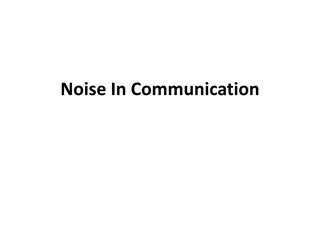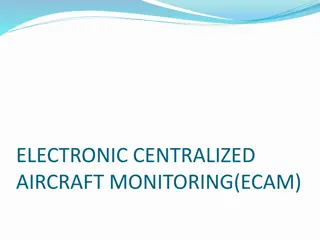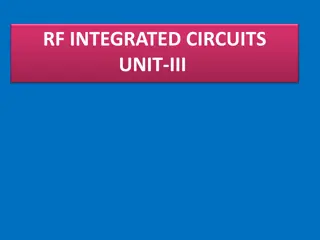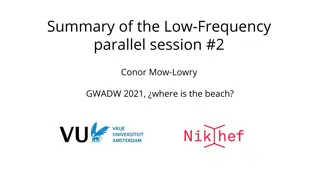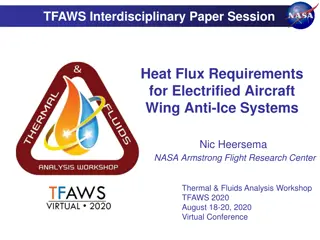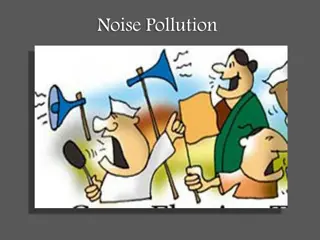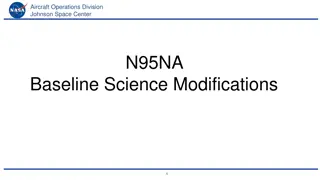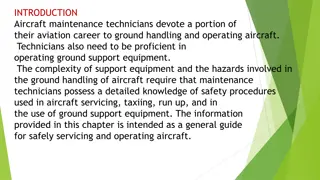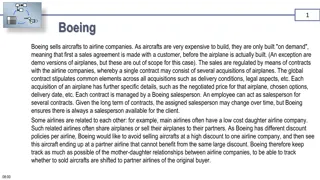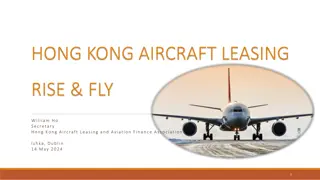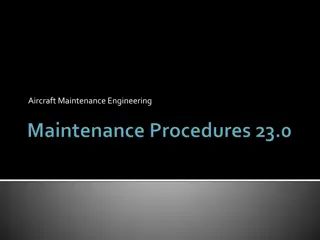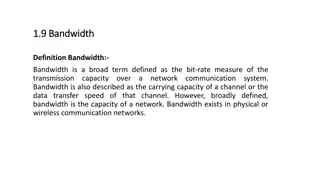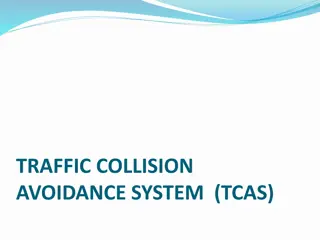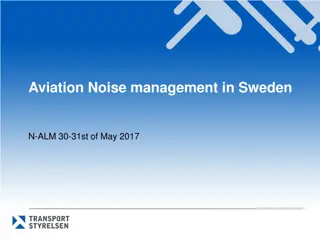Understanding the Impact of Aircraft Noise on Health - Recent Update
This report provides a six-month update on recent research findings regarding aircraft noise and its effects on health. Saucy et al. studied the association between aircraft noise exposure and cardiovascular mortality, particularly at night, with significant findings related to increased odds of night-time mortality for certain cardiovascular conditions. Lechner et al. emphasized the need to consider cumulative effects of various noise sources on sleep disturbance. Overall, the research highlights the importance of understanding the impact of aircraft noise on health outcomes.
Download Presentation

Please find below an Image/Link to download the presentation.
The content on the website is provided AS IS for your information and personal use only. It may not be sold, licensed, or shared on other websites without obtaining consent from the author. Download presentation by click this link. If you encounter any issues during the download, it is possible that the publisher has removed the file from their server.
E N D
Presentation Transcript
CAP 2113: Aircraft Noise and Health Effects a six month update Kay Jones 22ndApril 2021 1
Introduction This report is an update on recent work and findings in the field of aircraft noise and health effects. Aim: to provide the public and aviation industry with a concise and accessible update on recent noise and health developments. Covers published research and from September 2020 March 2021. Updates published on a six-monthly basis. Next report due end September 2021. 2
Recently published findings Saucy et al: Nocturnal aircraft noise and mortality 25,000 deaths around Zurich airport between 2000 and 2015 Aim: to investigate is aircraft noise a trigger for acute cardiovascular effects and the importance of timing of exposure. Timings considered: overall night preceding the day of death (23:00 07:00) late evening (19:00 23:00) reduced air traffic reserved for delayed flights (23:00 23:30) core night (23:30 06:00) early morning (06:00 07:00). 3
Saucy et al. continued Noise metrics considered: (i) average A-weighted equivalent continuous sound pressure level (LAeq) (ii) maximum sound pressure level (LAmax) (iii) number of events above threshold 55 dB 7,641 deaths during night; 17,245 during the day. Mean LAeq ranged from 17.6 - 45.2 dB On average, all three-noise metrics were highest in the evening time window (19:00 23:00) and lowest in the core night (23:30 06:00). Result: association between 2-hour aircraft noise exposure preceding the time of a cardiovascular death during the night. 4
Odds of night-time mortality in relation to 2-hour LAeq levels. This was particularly the case for IHD, MI, heart failure, and arrhythmias. 5
Saucy et al. continued The odds of night-time cardiovascular mortality (all causes) was significantly increased for 2-hour LAeq values above 40 dB. Association stronger females than males, especially for arrhythmias. Estimated 3% of deaths in study population attributed to aircraft noise. Higher for those living in quieter areas, and in older buildings. Association between 2-hour LAeq and mortality tended to be stronger with decreasing education level and socio- economic status, as well as older age. No consistent risk increase for daytime deaths. 6
Lechner et al: noise equivalents model and sleep disturbance (Austria) Cumulative effects of multiple noise sources need to be measured and considered. the annoyance equivalents model (Miedema), enables the assessment of the overall noise annoyance caused by multiple transportation sources. Used for annoyance but not for sleep disturbance. van Kamp et al. on behalf of the IGCB suggested a meta-analysis for self-reported sleep disturbance for the combination of all transport sources. Secondary data from a larger Innsbruck study was used to assess the model for self-reported sleep disturbance. 1,031 face-to-face interviews, and classified into three levels of exposure to road, rail and aircraft noise <45, 45 55, >55 dB Lden 7
Lechner et al continued Logistic regression analysis was used to predict source-specific exposure-response curves for percentage highly sleep disturbed in relation to Lnight levels. Exposure-response curves adjusted for self-reported noise sensitivity, access to a quiet fa ade, and existence of noise control windows. Range of exposure to aircraft noise 8 48 dB Lnight. Exposure-response relationship curves for highly sleep disturbed at a cut-off value of 72%. 8
(a) Exposure response relationships and their confidence intervals for the percentage of highly sleep disturbed for road, (b) rail and (c) air traffic noise, and (d) for the subgroup motorway noise. 9
Lechner et al continued Conclusions: a sleep disturbance equivalents model for multiple transportation noise sources is suitable for estimating total sleep disturbance within the same range as the annoyance equivalents model Air traffic at night results in a much higher level of self-reported sleep disturbance than the other transportation noise sources It is suggested that it is worthwhile to derive local exposure- response relationships in order to set noise limits. 10
FAA Neighbourhood Study Federal Aviation Administration (FAA) conducted a nationwide survey on annoyance due to aircraft noise. Aim was to obtain up-to-date information regarding aircraft noise annoyance in the U.S. Last in-depth survey 1992. Aim: to produce a new exposure-response curve. Survey sent to 40,000 households between October 2015 - September 2016 Over 10,000 people responded and completed the survey A follow-up telephone survey was also offered to the same participants, of which there was a 2,000 response rate. 11
FAA Neighbourhood Study continued 20 airports were selected Noise modelled down to 50 DNL 5-point ICBEN annoyance scale 13 environmental topics The responses 4 and 5 on the 5-point scale (60%) were classed as Highly Annoyed in this study. 72% is the usual threshold for HA. Number of respondents within each noise category (DNL). 12
FAA Neighbourhood Study continued Comparison of the Schultz curve and the new National Curve (US) for aircraft noise (DNL) and annoyance responses from the survey. 20% of people are Highly Annoyed at 50 dB DNL, and this figure rises with an increase in aircraft noise level. Dose-response curve considerably higher than historical US FICON curve, comparable to more recent European curves. 13
Baudin et al: annoyance and noise sensitivity in the association between aircraft noise levels and hypertension risk Few studies have considered the effects of aircraft noise annoyance and noise sensitivity in regard to cardiovascular risk or as mediating or modifying factors. A mediator variable explains the process through which two variables are related, while a moderator variable affects the strength and direction of that relationship. 2 aims: to investigate the risk of hypertension in relation to aircraft noise annoyance or noise sensitivity. to examine the role of modifier or mediator of these two factors in the association between aircraft noise levels and the risk of hypertension. 14
Baudin et al continued Data from 2 studies were pooled: HYENA and DEBATS (5,800 participants) to investigate the impact of aircraft noise annoyance and noise sensitivity on hypertension risk. Also investigated their modifying and mediating role on the relationship between aircraft noise levels and hypertension. Both studies conducted a face-to-face interview with measurements of blood pressure (BP), and other demographic and lifestyle questions. 51% of the participants were classified as hypertensive UK participants were the most exposed to aircraft noise at night (49.3 10.5 dBA Lnight), from Italy were least exposed (35.4 6.4 dBA). Almost 20% reported being HA by aircraft noise: Greek participants were most annoyed (43%), those from Sweden were least annoyed (10%). 15
Baudin et al continued 35% of participants reported low sensitivity to noise, 32% medium sensitivity and 33% high sensitivity. Italians most sensitive to noise, participants from Sweden were least sensitive to noise. A 10 dBA increase in Lnight was significantly associated with an increased risk of hypertension. Aircraft noise annoyance was also significantly associated with the risk of hypertension for highly annoyed people compared to those who were not highly annoyed. No difference between countries. Significant interaction between noise sensitivity and country. The interaction between noise sensitivity and Lnight was significant: the association between aircraft noise levels at night (Lnight) and the risk of hypertension increased with the level of noise sensitivity and was significant only among highly sensitive participants. 16
Baudin et al continued Conclusions: Aircraft noise levels are weakly associated with the risk of hypertension, and aircraft noise annoyance is associated with hypertension risk. Possible modifying effect of aircraft noise annoyance in the relationship between aircraft noise exposure and the risk of hypertension. Importance of future studies of this nature to take noise annoyance and sensitivity into account. 17
Baudin et al: aircraft noise annoyance and noise sensitivity in the association between aircraft noise levels and medication use. Also looked at medication use Asked to provide all prescribed and non-prescribed medications used in the last 2 weeks (HYENA) and the last 12 months (DEBATS) prior to the interview. There was a significant association between aircraft noise levels at night and antihypertensive medication only in the UK. No association was found with other medications. Aircraft noise annoyance was significantly associated with the use of antihypertensive medication, anxiolytics, hypnotics and sedatives, and antasthmatics with no difference between countries. 18
Baudin et al continued Noise sensitivity was significantly associated with almost all medications, with the exception of the use of antasthmatics, showing an increase in ORs with the level of noise sensitivity. Results also suggested a mediating role of aircraft noise annoyance and a modifying role of both aircraft noise annoyance and noise sensitivity in the association between aircraft noise levels and medication use. The association between aircraft noise levels and antihypertensive medication were significantly higher in highly sensitive and in highly annoyed participants. Suggest that future studies of the health effects of noise exposure have to consider both noise annoyance and noise sensitivity. 19
Other studies CAP 2113 ICCAN Lockdown Study: 2,000 respondents between June-July 2020. CAP 1971 September 2020 Lavia: PhD thesis, soundscape in UK (Internoise 2020) Soundscape, engagement and planning practices within airport expansion projects in the UK. investigating the role of soundscape management and public wellbeing with the planning processes for aviation expansion at two airports in the UK. Importance of non-acoustic factors e.g. perceived control . 2021 ICBEN, Internoise and Euronoise to be held this year. 20



